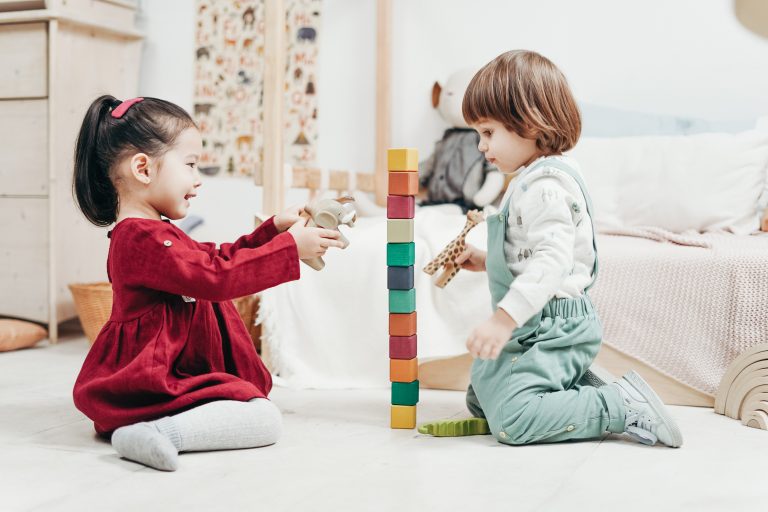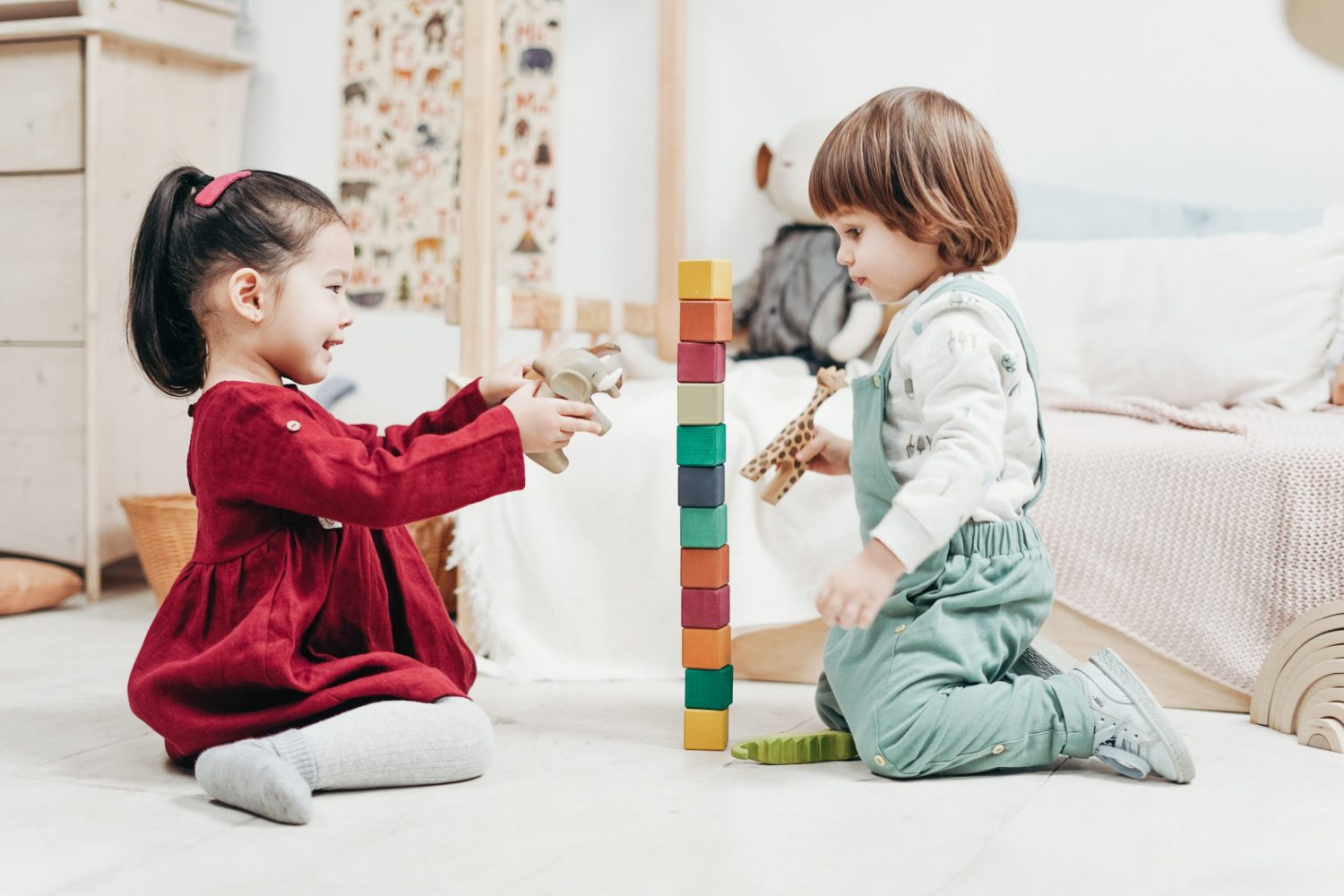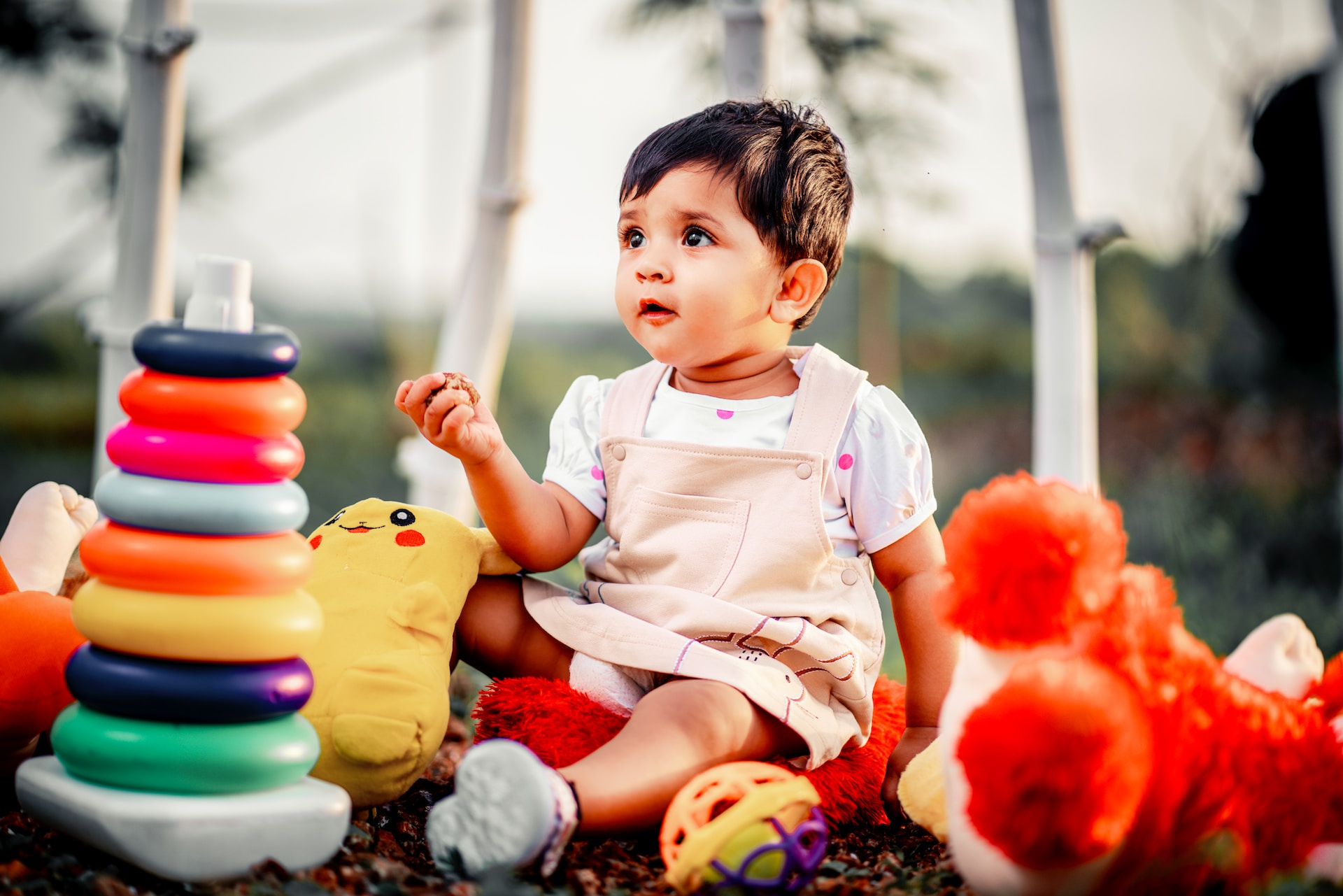As your child transitions from the “terrible twos” to the preschool stage, you may contemplate what new skills and knowledge to impart. At this age, your child is no longer a toddler but a developing young child with a burgeoning imagination and language abilities.
At three years old, your child is experiencing numerous developmental changes, such as forging connections with others, acquiring emotional regulation skills, and exhibiting a heightened sense of curiosity. As such, it is crucial to consider how to foster their growth in these areas.

Developmental Milestones of 3-Year-Olds
We must consider their physical and emotional developmental milestones to facilitate optimal learning for our three-year-olds. In addition, it is essential to recognize that the content we teach them and the teaching methods we employ must be appropriate for their age and abilities.
Motor Skill Milestones
Children can easily walk forward and backward at age three and alternate their feet – with one foot per step – as they walk up and downstairs. They can climb well, run efficiently, and start to pedal a three-wheel bike. In addition, they can put on clothes like loose pants or a jacket and use a fork while eating.
Children at this age should be able to turn a page in a book, draw a stick person comprising two to four body parts, and build a tower with three to four blocks. In addition, they can write some capital letters and turn rotating handles.
Cognitive Skill Milestones
At the age of three, your child’s imagination is flourishing, and they will likely pose numerous questions, particularly of the “why” variety. Their memory is also improving, and they should be able to comprehend and execute three-part commands while accurately identifying standard colors.
They can also grasp the concept of sameness and difference and understand time in terms of morning, afternoon, and night. At this stage, children should be able to recognize and correctly name everyday objects and images within their surroundings.
Furthermore, they can draw a circle when shown how to do so and have developed a sense of caution and self-preservation, such as avoiding hot objects after being warned about the potential danger.
Language/Communication Skills
Children acquire new vocabulary at age three primarily through listening to adults and engaging with stories. They can engage in an introductory conversation, exchanging at least two responses with another person. Additionally, they will often ask “who,” “what,” “where,” and “why” questions, such as “Where is mommy/daddy?”
When prompted, they can provide their first name and communicate effectively enough for others to understand them most of the time. By this age, they should be able to articulate their name, age, and gender, answer simple questions, and construct sentences of approximately five to six words.
Social and Emotional Milestones
At the age of three, children can express affection towards family and friends, often without prompting. They can also differentiate between happiness, anger, fear, and sadness. Additionally, they are beginning to grasp the concept of ownership and recognize the distinction between “mine” and “his” or “hers.”
They can typically calm down within ten minutes when separated from their caregiver, as is typical during childcare drop-offs. They display an interest in other children and often join in play with them, taking turns and demonstrating empathy towards others who may be upset. However, due to their vivid imagination, they may also develop irrational fears.
Three-year-olds thrive on routine and may become upset by significant changes.

What to Teach A Three-Year-Old?
At this age, our little ones still learn by playing with toys, hanging out with friends, and observing their parents. However, some children also show unique interest in specific activities or objects.
As their best teacher, what should we teach our three-year-olds?
Opportunity to Make Choices for Themselves
Allow your child to make simple choices. You need to narrow it down to two favorites because they might get overwhelmed with three or more options. For instance, you can ask: “What game do you want to play today – blocks or cars?” or “What do you want to wear today – the blue or yellow dress?”
Take Care of Themselves
Encouraging your child’s independence in self-care is essential at this stage, particularly regarding using the bathroom and utensils and grooming tasks such as brushing their teeth and hair. In addition, they can assist with removing and applying to clothes, enabling them to start dressing independently.
It is beneficial to teach them how to correctly put on clothing, including understanding the difference between the front and back and distinguishing between left and right. Additionally, they should be taught how to clean up by putting away toys, washing their hands, and using a washcloth.
Memorizing and Telling Stories
By age three, your child should be able to remember some parts of a story. Read simple storybooks aloud to your child and talk about the story’s main character, beginning, and end. They should understand what is happening in the book by looking at the pictures. Show your child how they can relate to what the characters feel. This process helps your child express feelings.
Learning through Playing
A three-year-old child learns a lot from playing. They develop new skills from both structured and unstructured play. Therefore, give your child lots of playtime. Use games to practice counting from 1 to 10 or identifying colors, shapes, and letters. Sing or recite nursery rhymes together.
Dealing with Conflicts
It is essential to provide three-year-old children with opportunities to interact and play with children their age. In addition, it is necessary to teach them how to make amends after hurting another child’s feelings and handle conflicts that may arise during playtime with others.
pportunities to play with children their age. Teach them to make up after hurting other kids’ feelings and how to handle conflicts while playing with others.

A Few Tips for Parents
Teaching a three-year-old can be enjoyable because they are quick learners and always curious about the world, with endless questions. However, this generation has been born into a world filled with technological tools and gadgets, and their learning style and media consumption differ from previous generations. Therefore, it is essential to remember some important tips while facilitating their learning journey.
Safety Is the Number One Priority.
Three-year-old children are highly mobile, and they possess a sense of fearlessness when it comes to trying new things. As a result, they may attempt to engage in activities that pose a risk to their safety. While it can be exhausting, we must keep a watchful eye on them. We aim to protect them from accidents such as falls, burns, ingesting harmful substances, or other hazardous situations.
CDC has posted a few guidelines on child safety measures.
Establishing A Healthy Bedtime Routine for Your Little One
It’s no secret that most three-year-olds resist going to sleep. With boundless energy and endless daily curiosity, many toddlers struggle to get enough rest. However, adequate sleep is crucial for brain development, and establishing a consistent bedtime routine can help prevent nightmares and midnight wake-ups. In addition, ensuring sound sleep quality can help our children stay focused and alert during the day.
Limit Screen Time
To promote healthy development, limiting and monitoring your child’s use of technology is essential. One way to do this is by keeping TVs, tablets, and smartphones out of their bedroom. Additionally, screen time should be strictly limited to one hour of high-quality
educational apps or programs. Watching the program with your child and discussing it afterward is also a good idea. By doing so, you can ensure that their screen time is limited and beneficial for their learning and development.
Bottom Line
Parents often underestimate how quickly time passes until they suddenly realize their children are becoming more independent. We are no longer the center of their world at three years old as they start to make friends with other children and even their teachers.
Nevertheless, we remain their most significant role models and source of pride. So, let’s cherish the precious moments we spend with our three-year-olds.

Dr. Insiyah Amiji is a pediatrician with over 10 years of experience specializing in newborn care and child nutrition. She has previously served as the head of the Pediatrics Department at Saifee Hospital in Tanzania.




![Best Outdoor Playset for 4-Year-Olds in [current_year] 8 Best Outdoor Playset for 4-Year-Olds](https://littlediscoverer.com/wp-content/uploads/2021/01/Best-Outdoor-Playset-for-4-Year-Olds.jpg)
![Best STEM Toys for 5-Year-Olds: [current_year] Updates 9 Best STEM Toys for 5-Year-Olds](https://littlediscoverer.com/wp-content/uploads/2020/12/Best-STEM-Toys-for-5-Year-Olds.jpg)
![Best Scooter for 2-Year-Olds in [current_year] 10 Best Scooter for 2-Year-Olds](https://littlediscoverer.com/wp-content/uploads/2021/03/Best-Scooter-for-2-Year-Olds.jpg)
![Best Gifts for 8 to 10-Year-Olds in [current_year] 11 Best Gifts for 8 to 10-Year-Olds](https://littlediscoverer.com/wp-content/uploads/2022/12/Best-Gifts-for-8-to-10-Year-Olds.jpg)